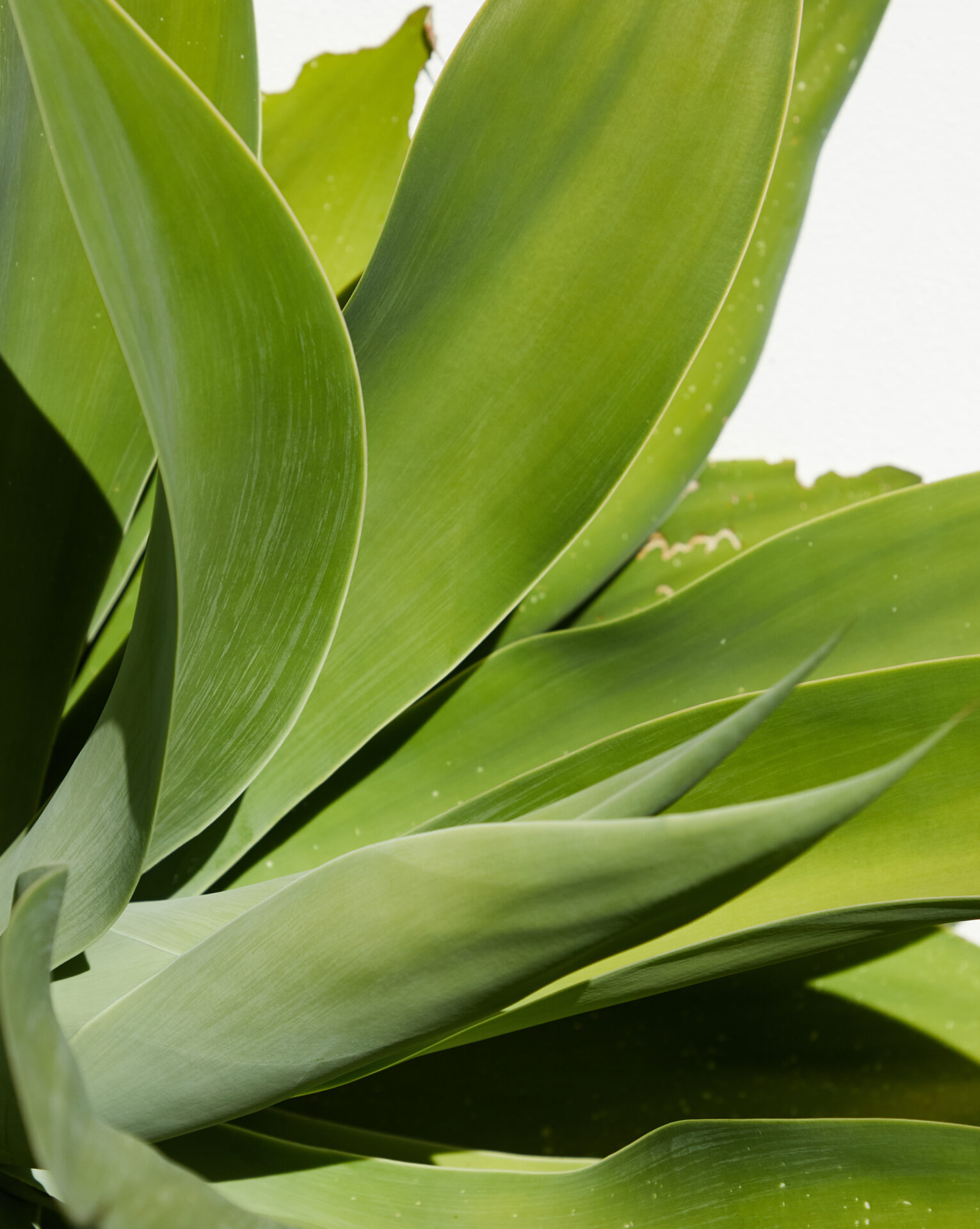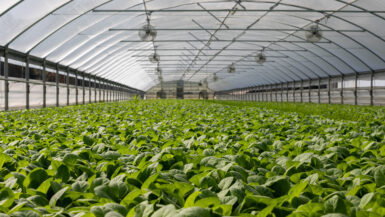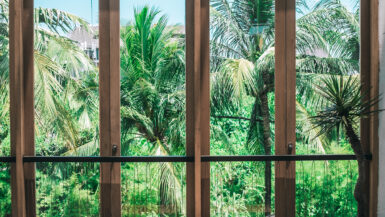Indoor vertical gardening has emerged as a practical and innovative solution for those with limited space in their homes, apartments, or offices. As urban dwellers increasingly seek ways to incorporate greenery into their lives, this approach allows for cultivating plants efficiently and visually appealingly.
In this article, we will explore a variety of indoor vertical garden ideas tailored to small spaces, discussing the benefits, essential elements, and various types of systems that can be employed. From living walls and hanging planters to modular setups and DIY projects, we will provide you with a comprehensive guide to creating your own thriving vertical garden, regardless of the size of your space.
So, let us embark on this journey together and explore the exciting world of indoor vertical gardening.
Inspirational Indoor Vertical Garden Ideas for Small Spaces
As urban living spaces continue to shrink, it has become essential for individuals to find innovative ways to bring the beauty of nature indoors. Indoor vertical gardens maximize space and add a touch of visual intrigue to any room. In this section, we will explore a variety of inspirational indoor vertical garden designs suitable for small spaces. These designs will not only enhance the aesthetics of your home but also provide numerous health benefits associated with having plants indoors.
Living Walls: Green Artwork for Your Home
Living walls, also known as green or vertical gardens, transform any blank surface into a lush, living canvas. These low-maintenance gardens can be created using various plant species and easily customized to fit the size and style of your space. Depending on your preferences, living walls provide an excellent opportunity to grow herbs, vegetables, or even flowers. Furthermore, living walls improve air quality and act as natural air purifiers, making them a practical and beautiful addition to any home.
Vertical Hanging Planters: Elevate Your Greenery
Vertical hanging planters offer a simple yet effective way to display your indoor plants in a visually stunning way. This design utilizes planters suspended from the ceiling, walls, or even windows, creating a unique focal point in your space.
They can be made using various materials, including wood, metal, or even repurposed items like old ladders or pallets. Vertical hanging planters are ideal for those with limited floor space, as they allow for cultivating multiple plants without occupying too much room.
Modular Vertical Garden Systems: Customize Your Green Space
Modular vertical garden systems are a versatile and adaptable solution for small spaces. These systems consist of individual units that can be easily assembled and rearranged to create a personalized indoor garden.
Modular systems can be mounted on walls, placed on shelves, or even freestanding, offering endless possibilities for customization. They are also an excellent choice for those interested in exploring the world of hydroponic vs. soil-based indoor vertical gardens, as they allow for easy experimentation and adjustments as needed.
DIY Vertical Garden Projects: Unleash Your Creativity
For those looking for a more hands-on approach, DIY vertical garden projects provide an opportunity to unleash your creativity and design a unique indoor garden. The possibilities are endless, from repurposing old furniture and containers to constructing elaborate plant shelves. DIY vertical gardens allow you to showcase your style, making your indoor garden a true reflection of your personality. Additionally, these projects can be fun and rewarding for individuals and families.
In summary, indoor vertical garden designs are an excellent way to transform small spaces into lush, thriving environments. You can create a verdant oasis that perfectly complements your home and lifestyle by exploring living walls, hanging planters, modular systems, and DIY projects. No matter your design, an indoor vertical garden will undoubtedly enhance your space and elevate your connection to nature.
Choosing the Right Plants for Your Indoor Vertical Garden
Selecting the ideal plants for your indoor vertical garden ensures its success and longevity. Given the unique growing environment and space constraints, choosing plants that will thrive in these conditions while meeting your aesthetic preferences and maintenance requirements is essential. In this section, we will discuss various factors to consider when selecting plants for your indoor vertical garden and provide some popular plant options that are well-suited for this type of gardening.
Understanding Light Requirements for Indoor Plants
Assessing the light conditions in your space is essential before selecting plants for your indoor vertical garden. Different plant species have varying light requirements, so choosing plants that will thrive under the available light in your home is essential. Low-light plants, such as pothos, snake, and ZZ plants, are great options for spaces with limited natural light while sun-loving plants like succulents, ferns, and ivy require a space with bright, indirect sunlight.
Considering Plant Size and Growth Habits
When creating an indoor vertical garden, it is essential to consider each plant species’s size and growth habits. Smaller plants are generally a better fit for vertical gardens, as they require less space and are easier to manage. It is also essential to consider the growth habits of the plants, as some species may become too large or unruly for a vertical garden.
Trailing or climbing plants, such as philodendrons, spider plants, and a string of pearls, are excellent options for vertical gardens. They naturally cascade downward or climb upward, making them well-suited for this type of gardening.
Opting for Low-Maintenance Plants
Indoor vertical gardens require regular care and maintenance, such as watering, pruning, and fertilizing. To ensure the success of your garden and minimize the workload, it is beneficial to choose low-maintenance plant species. Some popular low-maintenance options for indoor vertical gardens include air plants, succulents, and peace lilies, known for their ability to withstand varying levels of care and neglect.
Combining Aesthetics with Functionality
Lastly, when selecting plants for your indoor vertical garden, it is crucial to consider both aesthetics and functionality. Choose plants with varying colors, textures, and growth habits to create a visually appealing display. Additionally, consider incorporating plants with air-purifying properties, such as spider plants, dracaenas, and English ivy, which can help improve the air quality in your space.
With careful consideration of light requirements, plant size, maintenance needs, and aesthetic preferences, you can create a flourishing indoor vertical garden that enhances the beauty of your home and provides numerous health benefits. By thoughtfully selecting the right plants for your space, you can ensure the success of your indoor vertical garden and enjoy the lush greenery it brings to your home.
Tips for Maintaining Your Indoor Vertical Garden
An indoor vertical garden is a fantastic way to bring nature into your small living space, but it does require regular care and attention to keep it thriving. This section will provide essential tips and tricks for maintaining your indoor vertical garden, ensuring its longevity and vibrancy. From proper watering techniques to pest control, these guidelines will help you keep your green oasis flourishing year-round.
Water Wisely: Finding the Right Balance
Watering your indoor vertical garden can differ slightly from traditional gardening methods. It is crucial to strike the right balance between over-watering and under-watering to promote healthy plant growth. Be sure to use a well-draining potting mix and provide a consistent water supply to your plants, considering their individual needs. Consider placing a drip irrigation system or self-watering planters for plants with higher water requirements to ensure they receive the necessary hydration. On the other hand, succulents and other drought-tolerant plants will require less frequent watering.
Light It Up: Providing Adequate Sunlight
As mentioned earlier, understanding your plants’ light requirements is essential for their well-being. Ensure that your indoor vertical garden is placed in an area that provides the appropriate light for your chosen plants. If your space lacks natural light, you may want to invest in supplemental grow lights to provide the necessary illumination for your plants to thrive.
Feed Your Greens: Fertilizing for Optimum Growth
Fertilizing your indoor vertical garden is essential for promoting healthy plant growth and maintaining vibrant foliage. Depending on the chosen plants, you may need to fertilize more or less frequently. Generally, use a balanced, water-soluble fertilizer and follow the product instructions for application rates and frequency. Remember that over-fertilizing can harm your plants, so be cautious not to overdo it.
Prune and Groom: Keeping Your Garden in Shape
Regular pruning and grooming are necessary to keep your indoor vertical garden looking its best. This practice maintains the garden’s appearance and encourages healthy growth by removing dead or damaged plant parts. Be sure to trim any overgrown foliage, remove dead leaves and flowers, and maintain a consistent shape for your plants. This will improve your garden’s aesthetics and promote better air circulation, reducing the risk of disease and pest infestations.
Keep Pests at Bay: Natural Pest Control Solutions
Pest control is an essential aspect of maintaining your indoor vertical garden. Regularly inspect your plants for signs of pests or diseases, and address any issues promptly. Opt for natural pest control solutions, such as neem oil or insecticidal soaps, to minimize the use of harsh chemicals within your living space. Introducing beneficial insects, such as ladybugs or lacewings, can help control pest populations and maintain a healthy garden ecosystem.
In summary, maintaining a thriving indoor vertical garden in a small space requires attention to watering, lighting, fertilizing, pruning, and pest control. By carefully monitoring these aspects and addressing any issues promptly, you can ensure that your indoor garden remains a lush, vibrant sanctuary that brings life and beauty to your home.
Benefits of Indoor Vertical Gardening in Small Spaces
Indoor vertical gardening is an innovative approach to urban gardening that offers numerous benefits for those living in small spaces. This unique method of growing plants not only maximizes the use of limited space but also provides a range of health, environmental, and aesthetic advantages. In this section, we will explore the various benefits of indoor vertical gardening in small spaces, which make it an increasingly popular choice for urban dwellers.
Maximizing Limited Space: Grow More in Less Area
One of the primary benefits of indoor vertical gardening is its ability to maximize the use of limited space. Growing plants vertically allows you to cultivate a wide variety of plants in a relatively small area. This is particularly advantageous for those living in apartments or homes with limited floor space, as it creates a lush, thriving garden without sacrificing valuable living space.
Improving Air Quality: Natural Air Purifiers
Indoor vertical gardens can significantly improve the air quality within your living space. Plants are natural air purifiers, as they absorb pollutants and release oxygen through photosynthesis. By incorporating a variety of plants into your indoor vertical garden, you can effectively reduce the levels of harmful pollutants, such as carbon dioxide, benzene, and formaldehyde, resulting in a healthier and fresher indoor environment.
Boosting Mental Health: A Dose of Green Therapy
The presence of plants in your living space has been linked to numerous mental health benefits. Research has demonstrated that indoor plants can reduce stress, improve mood, and enhance cognitive function. Creating an indoor vertical garden can transform your small space into a calming oasis that promotes relaxation and overall well-being.
Enhancing Aesthetics: A Living Work of Art
Besides their practical benefits, indoor vertical gardens add a unique visual appeal to your living space. These gardens serve as living works of art, bringing color, texture, and life to otherwise blank walls or unused corners. By carefully selecting and arranging plants within your vertical garden, you can create a visually stunning focal point that enhances the overall aesthetics of your home.
Reducing Noise Pollution: Natural Sound Barriers
Indoor vertical gardens can also act as natural sound barriers, helping to reduce noise pollution within your living space. The plants within your garden can absorb and deflect sound waves, effectively dampening noise from the surrounding environment. This can be particularly beneficial for those living in noisy urban areas, creating a more peaceful and serene indoor atmosphere.
Increasing Energy Efficiency: Natural Insulation and Cooling
Another notable benefit of indoor vertical gardening is its ability to improve the energy efficiency of your living space. The plants within your garden can provide natural insulation, regulate indoor temperatures, and reduce the need for artificial heating and cooling systems. This can result in significant energy savings and a reduced carbon footprint, making indoor vertical gardening an environmentally friendly choice.
Overall, indoor vertical gardening offers many benefits for those living in small spaces. By maximizing limited space, improving air quality, boosting mental health, enhancing aesthetics, reducing noise pollution, and increasing energy efficiency, these gardens provide a practical and visually appealing solution for urban dwellers seeking to incorporate greenery into their lives.
Embracing indoor vertical gardening allows individuals to experience the joys of gardening and reap the rewards of a healthier, more beautiful living space, even within the confines of a small urban home.
DIY Indoor Vertical Garden Structures and Systems
Creating your own DIY indoor vertical garden structures and systems is an excellent way to personalize your garden and showcase creativity. With ingenuity and effort, you can transform everyday items into functional and visually appealing vertical gardens that fit seamlessly into your small space.
In this section, we will explore a variety of DIY indoor vertical garden structures and systems that cater to different tastes and preferences. These ideas will inspire you to design a one-of-a-kind indoor vertical garden that maximizes your limited space and reflects your unique personality and style.
Upcycled Pallet Gardens: A Rustic Touch
Repurposing an old wooden pallet is a popular and budget-friendly option for creating a DIY indoor vertical garden. This rustic and eco-friendly approach involves attaching pots or containers to the pallet and filling them with your favorite plants. Pallet gardens can be mounted on walls or left freestanding, making them a versatile solution for small spaces. You can creatively customize your pallet garden by painting or staining the wood to match your interior décor.
Ladder Plant Shelves: A Step Up in Style
Transform an old ladder into a stylish and space-saving indoor vertical garden by converting it into a series of plant shelves. This can be achieved by simply placing wooden planks or shelves across the ladder’s rungs and arranging your plants on each level. Ladder plant shelves offer an attractive and functional solution for small spaces while providing ample room for various plant species. You can paint or stain the ladder to match your home’s interior, creating a cohesive and eye-catching display.
Wall-Mounted Mason Jar Planters: Vintage Charm
Consider creating wall-mounted mason jar planters for your indoor vertical garden for a touch of vintage charm. This DIY project involves attaching mason jars to a wooden board or directly to your wall and filling them with small plants or herbs. This space-saving idea adds a unique and nostalgic feel to your indoor garden, making it an appealing focal point in your home. Customize your mason jar planters using various jar sizes, or paint the lids for a pop of color.
DIY Hanging Gardens: A Floating Greenery Display
Craft your own DIY hanging planters to create a captivating floating garden display. You can achieve this using a variety of materials, such as rope, macramé, or even repurposed items like old belts or scarves. Hanging gardens add visual interest to your space and allow you to grow multiple plants without occupying valuable floor space. Experiment with different hanging techniques and materials to create a unique indoor vertical garden that complements your style and preferences.
DIY Pipe Planters: An Industrial Edge
Consider constructing DIY pipe planters for your indoor vertical garden for a modern and industrial look. Using PVC or metal pipes, you can create a series of planters mounted on your wall, providing a sleek and space-saving solution. Pipe planters are visually striking and highly customizable, allowing you to design a vertical garden that perfectly suits your space and style. Customize your pipe planters by painting them, arranging them in unique patterns, or incorporating different pipe sizes for added visual interest.
With imagination and effort, you can create captivating DIY indoor vertical garden structures and systems that cater to your unique tastes and preferences. By exploring ideas such as upcycled pallet gardens, ladder plant shelves, wall-mounted mason jar planters, DIY hanging gardens, and pipe planters, you can design a personalized indoor vertical garden that maximizes your small space and enhances the overall aesthetics of your home. Embrace your creativity and embark on a DIY indoor vertical garden project that reflects your individuality and passion for gardening.







Leave a reply